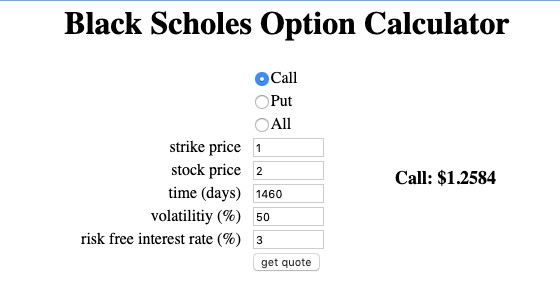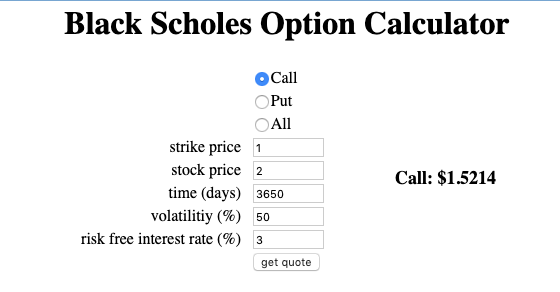The Hidden Cost Of Extending Option Exercise Periods
Many people in startup land believe that the answer to the challenges around forcing departing employees to exercise vested options is to simply extend the option exercise period to the maximum (ten years) allowed by the IRS.
It certainly is one of the techniques that are available to companies and one that a number of our portfolio companies have adopted. Another option, and one that I prefer, is for a market to develop around financing these option exercises (and the taxes owed) when employees depart.
However, if you are thinking about extending the option exercise period for departing employees, you should understand that it will cost your company something.
Here is why:
Options are worth more than the spread between the strike price (the exercise price) and what the stock is actually worth. They have additional value related to the potential for the stock price to appreciate more over the life of the term of the option.
There is a formula that options traders (and companies that issue options) use to value options. It is called the Black-Scholes formula.
If you click on that link, you will quickly realize that the math used in the Black-Scholes formula can be complicated. But fortunately, there is a neat little web app that I frequently use to estimate the value of an option. It is here.
So let’s say that your company is issuing options at $1/share (your 409a) but your most recent financing was done at $2/share. Then a four year stock option is worth roughly $1.25/share.

If, on the other hand, you offer a ten year option exercise period to your employees, the value of the option rises to $1.52/share, reflecting the longer period of time that the stock could appreciate over.

That is a 20% increase in the cost of issuing stock options. You could mitigate that by reducing the number of options you issue to incoming employees by 20% but that might make your equity comp offers less attractive to the “market” because incoming employees won’t value the longer exercise periods appropriately.
Stock based compensation costs are real costs even though many in startup land think of options as “free” because they don’t cost cash. The accounting profession has attempted to estimate these costs and companies do put stock based compensation costs on their income statements. If you go with ten year exercise periods instead of four year exercise periods, expect those expenses to go up significantly. Twenty percent is just the amount in my example. It could be larger, possibly as high as fifty percent (or more) if your exercise price is a lot closer to the current value of your stock.
This extra value of a ten year stock option versus a four year option is known as “overhang” by investors. It is the cost of carrying a group of people who have a call option on your stock but don’t have to pay for it for a long period of time. Generally speaking investors don’t like a lot of overhang in a stock.
All of that said, employees are the ones who create value for shareholders. They need to be compensated for that. And I am a fan of both cash compensation and stock based compensation. I like to see the employees of our portfolio companies well compensated in stock. That has a cost and everyone should be well aware of what it is. Longer exercise periods increase that cost. I would rather put more stock in the hands of the employees of our portfolio companies than give them longer exercise periods. But regardless of where one comes out on that tradeoff, it is important to recognize that it is a tradeoff. There are no free lunches, not even in stock option exercise periods.






